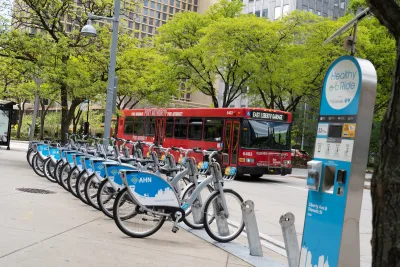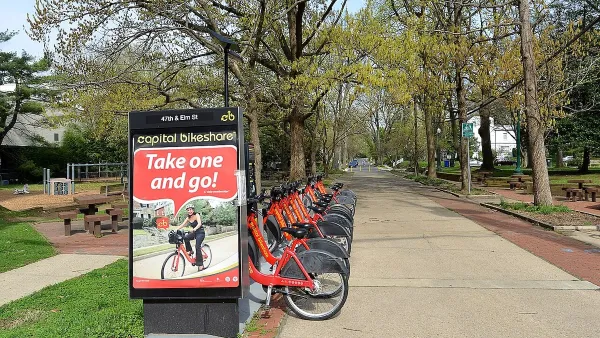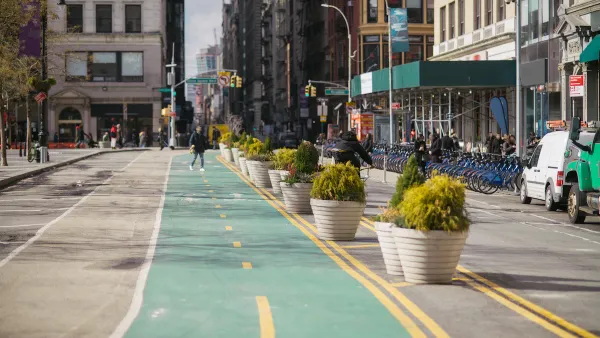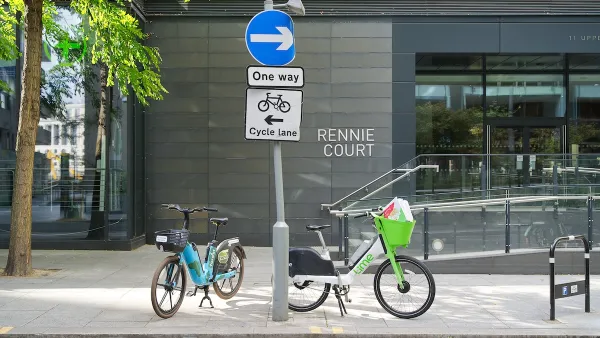For shared mobility to succeed, systems must tap into the connectivity and funding potential offered by closer collaboration with public transit.

Leaders in the shared bike and scooter industry are renewing a call to better integrate micromobility with public transit to connect to public funding and create more comprehensive transit networks.
Writing in GovTech, Skip Descant describes the experiences shared by micromobility operators from around the country in a North American Bikeshare and Scootershare Association (NABSA) webinar.
In Eugene, Oregon, the nonprofit-operated bike share system relies on fare revenue for 25 percent of its income, while the rest comes from a combination of local, state, and federal sources. “In the San Francisco Bay Area, the Metropolitan Transportation Commission (MTC) invested some $20 million from its transportation electrification initiative — which generally funds the acquisition of e-buses or other forms of electrifying transportation — toward the Bay Wheels bike-share program.” E-bikes are becoming a popular addition to shared mobility fleets, making them more inclusive and accessible for more riders.
FULL STORY: To Fund Micromobility, Connect It to Public Transit

National Parks Layoffs Will Cause Communities to Lose Billions
Thousands of essential park workers were laid off this week, just before the busy spring break season.

Retro-silient?: America’s First “Eco-burb,” The Woodlands Turns 50
A master-planned community north of Houston offers lessons on green infrastructure and resilient design, but falls short of its founder’s lofty affordability and walkability goals.

Delivering for America Plan Will Downgrade Mail Service in at Least 49.5 Percent of Zip Codes
Republican and Democrat lawmakers criticize the plan for its disproportionate negative impact on rural communities.

Test News Post 1
This is a summary

Test News Headline 46
Test for the image on the front page.

Balancing Bombs and Butterflies: How the National Guard Protects a Rare Species
The National Guard at Fort Indiantown Gap uses GIS technology and land management strategies to balance military training with conservation efforts, ensuring the survival of the rare eastern regal fritillary butterfly.
Urban Design for Planners 1: Software Tools
This six-course series explores essential urban design concepts using open source software and equips planners with the tools they need to participate fully in the urban design process.
Planning for Universal Design
Learn the tools for implementing Universal Design in planning regulations.
EMC Planning Group, Inc.
Planetizen
Planetizen
Mpact (formerly Rail~Volution)
Great Falls Development Authority, Inc.
HUDs Office of Policy Development and Research
NYU Wagner Graduate School of Public Service





























